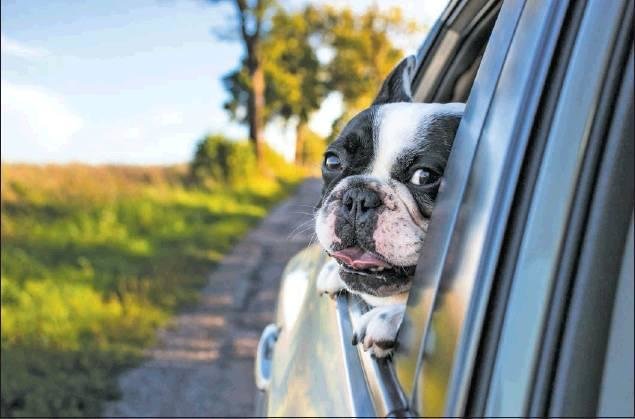Furry Friends
A warning against leaving pets in hot cars
Hot cars kill pets
With the recent 100 degree days, I wanted to remind everyone about the dangers of leaving your pet in a car.
In 10 minutes, the temperature inside a parked car can …
This item is available in full to subscribers.
Subscribe to continue reading. Already a subscriber? Sign in
Get 50% of all subscriptions for a limited time. Subscribe today.
Please log in to continueNeed an account?
|
Furry Friends
A warning against leaving pets in hot cars
Hot cars kill pets
With the recent 100 degree days, I wanted to remind everyone about the dangers of leaving your pet in a car.
In 10 minutes, the temperature inside a parked car can rise 20 degrees.
It can go up 30 degrees in 20 minutes.
After an hour, the temperature can be 40 degrees higher than the outside temperature.
When it’s 90 degrees outside, it can be 120 degrees in your car within 20 minutes.
If you leave your pet in a parked car, they are at risk of serious injury or even death. Cracking the windows will make no difference.
Pets can over-heat even in the winter. In our area it can be 70 degrees during the winter. That means it can be 110 inside your car even in January.
Heat stroke or heat prostration most commonly occurs when pets are left in a hot car.
It can also occur when a pet is left outdoors in hot, humid weather without proper shelter or if they are exercised in hot and humid weather.
Pets that are overweight or have respiratory issues are more prone to heat stroke.
Flat nosed breeds such as pugs, bulldogs, boxers are also more prone to heat stroke because they do not always pant as efficiently as other breeds.
Dogs have a limited number of sweat glands, and most of them are located in their foot pads. Panting is the main way dogs cool themselves because it allows them to remove heat by evaporation.
High humidity can lessen the effects of panting.
In the summer months you should keep exercise routines short and try and do them in the morning or late in the day. If your dog begins panting heavily, call a halt to the play.
Have water available, but don’t allow your dog to drink a lot of water quickly. Make your pet take a break to prevent over-filling their stomach.
If your pet becomes overheated, move them to a cool location and point a fan on them. Place cool, wet towels on the back of the neck, the underside of the abdomen, and the armpits. The fan will improve the evaporation and help with the cooling.
Avoid using ice or very cold water as this could make it take longer for your pet to cool down. The cold temperature causes the skin blood vessels to shrink which ends up trapping heat instead of letting it be released.
Only give your pet water if they are alert and want to drink.
Take your pet to your veterinarian or the closest hospital as soon as possible.
Air travel in the summer can be dangerous for your pet. Keep your pet in the cabin with you if possible.
Don’t travel with your pet during the hottest time of the day. Direct flights are best or flights with only one connection. Your pet should be in good health before traveling. Avoid sedating your pet if possible.
The Air Transport Association provides information on air travel with your pet and even how to check on your pet in route.
Pet nutrition quiz
Do you know the single most important nutrient for dogs and cats?
If you said water, you would be right.
Animals should drink about 1.5 ounces of water for every pound of weight.
How many treats should you feed your pet?
Treats should be limited to 10% of their daily calorie intake.
Do pet foods list allergy information on their packaging?
Unfortunately, over the counter pet foods don’t always list potential allergens like soy. In a study published in Food Control it was found that of 52 pet food products tested only 31 were correctly labeled.
Is pumpkin a good source of fiber?
Pumpkin does contain fiber. Fiber can help pets with a host of issues including diarrhea. But one tablespoon of pumpkin a day won’t do much good. According to board certified nutritionist at Cummings Clinical Nutrition Service, you’d need to feed more than 2.5 cups of pumpkin per day to a cat and nearly 12 cups per day to a medium size dog.
How much longer could your dog live if he or she were kept at their ideal weight?
Dogs kept at their ideal weight from puppyhood through senior life stages live an average of 15% longer.
Which is a better predictor of your cat’s health, housing and activity, or the amount of carbohydrates they eat?
It turns out that housing and activity are more significant than carbohydrates as predictors of your cat’s health.
Enjoy your summer, and stay mindful of your pet’s safety and diet!
Other items that may interest you










Comments
No comments on this item Please log in to comment by clicking here